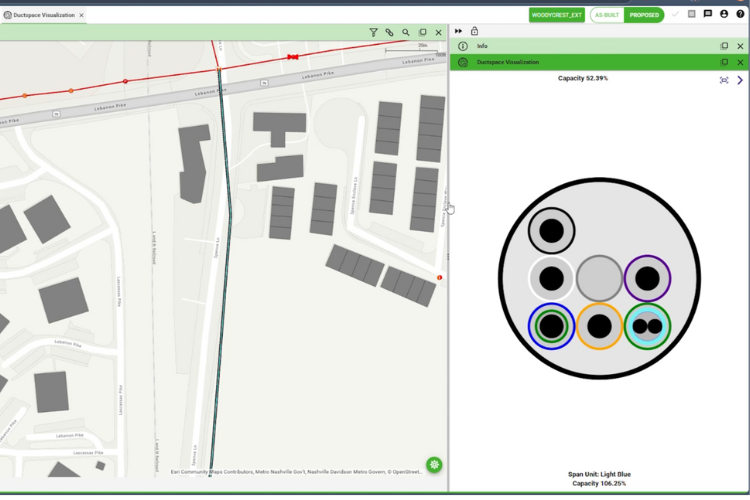Telecommunications is witnessing a surge in broadband development, especially in rural areas, driven largely by substantial funding initiatives from governments and private investors. This has sparked a race among incumbents and emerging contenders to rapidly expand their fiber footprints. However, securing funding is just one aspect of the larger picture.
Effective fiber project management entails coordination among multiple teams, each contributing valuable data across various stages from initial planning to construction to market rollout. Despite generating a wealth of data, without proper organization and analysis, there's a risk of data becoming overwhelming and overlooked. Consequently, network operators are increasingly turning to comprehensive network management systems to optimize operations and extract maximum value from their data.
We've identified five key factors emerging as top priorities for service providers as they envision and select a fiber asset management system. Let's explore each of these factors in detail:
1. System alignment: Does the system align with the organization's mission and goals?
System alignment is crucial to avoid technology that's rooted in outdated practices or aimed at achieving goals from the past. Like any organization, telcos have overarching objectives, such as improving environmental, social, and governance (ESG) impacts, modernizing systems, enhancing operations, and innovating with new products and services. Selecting a system that aligns with the company's goals is vital for success, as it fosters collaboration and facilitates the realization of organizational objectives.
2. Industry focus and depth: Is the system purpose-built for fiber management, ensuring optimal functionality and security?
When managing fiber, it's essential to utilize a system purpose-built for the task, avoiding generic tools that could compromise security and functionality. Compliance requirements, whether imposed by government agencies or funding bodies, necessitate thorough reporting and documentation. Failing to adhere to these standards can lead to delays and potentially jeopardize funding sources.
3. Interoperability: Can the system seamlessly integrate with existing workflows and systems, minimizing technical debt and streamlining operations?
Whatever the endeavor, it demands cooperation among different teams—planning, engineering, finance, construction, operations, sales, marketing, customer service, etc.—all working together around a shared set of accurate information and maps. Siloed systems that only serve the needs of a few departments can lead to unnecessary delays and added expenses, accumulating what's known as technical debt. This debt encompasses the extra time and money needed for workarounds, custom code, and data management inefficiencies. By prioritizing interoperability, organizations can mitigate productivity losses and ultimately reduce costs.
4. Ease of use: Does the system offer a user-friendly interface and robust tools for efficient design and data management?
While user-friendliness and efficiency are key to system adoption, the system should provide more than just surface-level ease. Ease of use involves not only intuitive user interfaces but also comprehensive functionality and support resources to maximize system utilization and organizational impact. For fiber management, the system should offer depth in modeling connectivity, including strand, circuit, and customer management, and in handling aspects like splitters, downstream connections, and sequential tracking.
5. Scalability and performance: Can the system handle the volume of data and tasks associated with fiber network operations, ensuring smooth scalability and performance?
Deploying a fiber network is a long-term investment, spanning years of construction followed by decades of operation. It's important to consider factors such as task completion time and the system's ability to handle increasing volumes of data, especially as data continues to accumulate over time. Implementing the right asset management system can significantly enhance operational efficiency, without requiring changes to existing BSS/OSS solutions, personnel, or processes.
Navigating the intricacies of fiber network deployment requires a strategic blend of technology, collaboration, and foresight. By selecting the right network asset management system, telcos can overcome data challenges, optimize operations, and pave the way for a resilient fiber infrastructure that meets the demands of today and tomorrow.
Want additional insights? Check out our recent webinar with Esri and the Fiber Broadband Association: Optimizing your network: 5 essential elements for effective fiber management.



